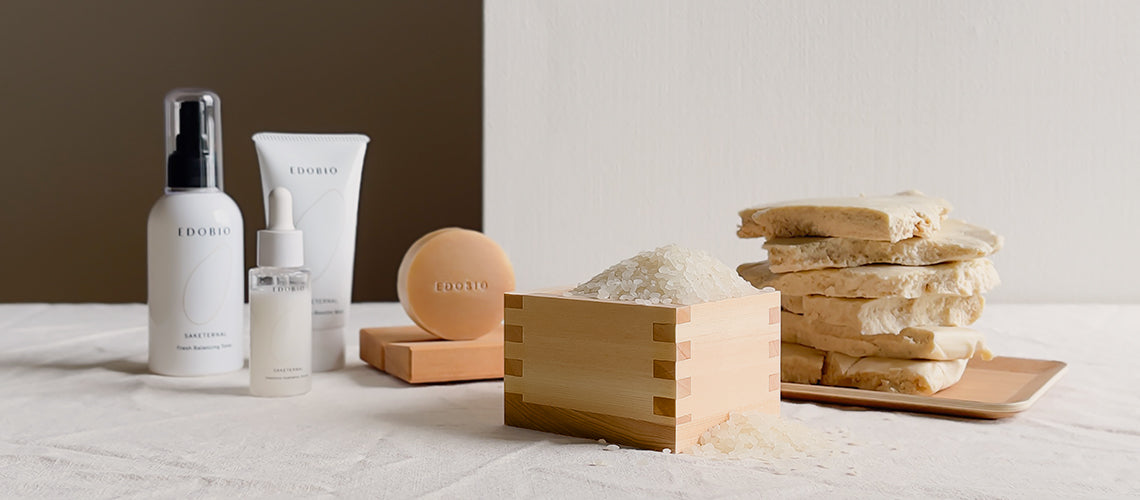What is sake lees and how is it different from sake?
Sake lees or sake kasu is a byproduct from the Japanese sake making process. Different from the rice wine itself, sake lees is the leftover material that is packed with protein, fiber, and vitamins but usually gets less attention than its liquid counterpart. Sake production usually begins by fermenting rice with the fungus koji. Koji releases enzymes that break down the rice starch into sugar, and with the help of yeast, the rice sugars are converted into alcohol within roughly 4 weeks. At the end, the fermented mixture or moromi is pressed out to extract the liquid sake portion, and the remaining solid residue is known as sake lees.
Sake lees in Japanese cuisine
Although sake lees can be discarded, the Japanese mottainai culture encourages not wasting the precious gifts of nature, and as a result, traditional Japanese cuisine features sake kasu as an ingredient in a variety of dishes. Amazake is a sweet fermented rice drink that often utilizes sake kasu as a base. It is often consumed as a supplement for beautiful skin, hair, and a healthy gut. Kasujiru is a winter miso soup made of salmon and vegetables, that features sake kasu in its broth. Sake kasu marinade is also a popular choice when pickling fish, meat, and vegetables. You can even find sake lees baked into breads and mixed in with ice cream, amongst other experimental ways to enjoy the nutrient dense food!
Skincare benefits of sake lees
Brightening
The Vitamin E, arbutin, and ferulic acid content found in sake kasu together work to combat hyperpigmentation and prevent the formation of age spots, sun spots, and skin inflammation, which makes sake lees one of the popular ingredients for Japanese brightening products.
Softening and soothing
Sake lees is the friend of sensitive skin, and it is known for its ability to help soothe skin conditions like eczema and acne.
Rejuvenating
Sake lees is well-known for its powerful anti-aging benefits. Its high Vitamin B content is said to help accelerate skin cell turnover, rejuvenating the skin and slowing down premature aging. Antioxidant ferulic acid also helps to protect the skin from the damaging effects of free radicals, minimize the formation of fine lines and enhance the skin’s firmness.
Moisturizing
Much like hyaluronic acid, the sugar compounds found in fermented rice act as emollients that increase skin cell water retention for plump and elastic skin. Linoleic acid also helps to fortify the skin barrier so that it can hold on to moisture and defend the skin from outside irritants.
Where can I find sake lees skincare products?
Despite the myriad known beauty and health benefits of sake lees and attempts to include it in Japanese cuisine, every year a big percentage of sake kasu is tossed out as industrial waste and never gets repurposed. Simply by incorporating sake kasu into your beauty routine, you are playing a part in helping minimize food waste. Japanese beauty brand EDOBIO is taking great strides to make the most of this powerful ingredient. The brand has developed a special form of sake lees, which promotes higher performing hydration, brightening, and texture balancing properties of the ingredient. Check out EDOBIO’s Radiance Booster Mask, Fresh Balancing Toner, Intensive Hydration Serum, and Masu Soap, all of which harness the power of sake lees.
Formulated with Okinawan beauty clay kucha and Japanese green tea extracts, this rinse-off brightening mask helps to repair skin that has been damaged by environmental factors like pollution, UV rays, and dry air.
Versatile as both a toner and refreshing mist that can be spritzed on at any time for additional hydration, this lightweight spray offers balanced moisture without overwhelming the skin.
EDOBIO Intensive Hydration Serum
The unique texture of this botanical essential oil-based serum delivers a boost of moisture and wraps the skin in a protective layer.
A handcrafted plant-based “souffle-style” soap suitable for both face and body, this eco-friendly cleanser helps to improve skin elasticity and hydration levels.
If all these products seem equally enticing and you simply can’t decide between them, you’re in luck, because for a limited time EDOBIO is offering their Essentials Beauty Box at a steal of a price. The box includes minis of all four products above, plus a handy-dandy foaming net and the brand’s Glowing Night Gel Mask, a lightweight sleeping mask that revitalizes and restores the skin to a soft supple texture overnight. As the main ingredient in the product line, the sake kasu is produced in a brewery in Gifu Prefecture using centuries-old methods from Japan’s Edo period. If you’re looking for tradition meets innovation in your skincare routine, this box is it!






